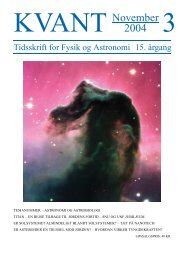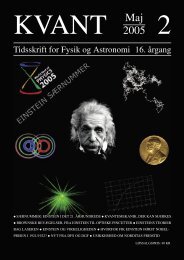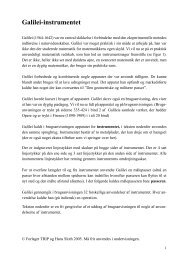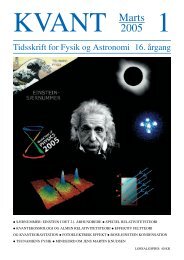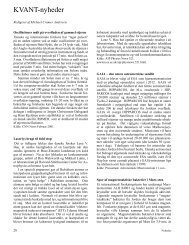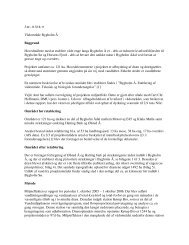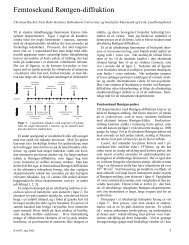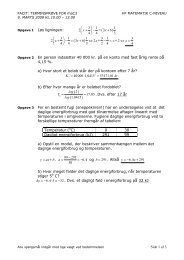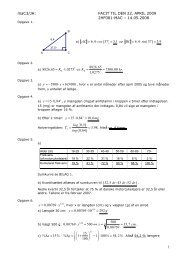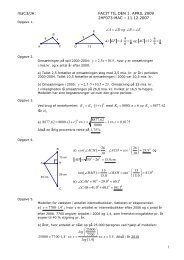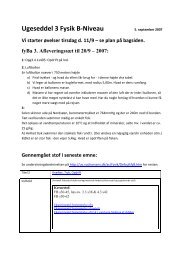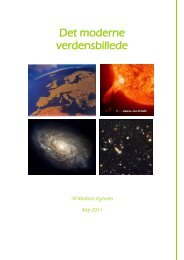Chapter 7 The Outer Planets
Chapter 7 The Outer Planets
Chapter 7 The Outer Planets
Create successful ePaper yourself
Turn your PDF publications into a flip-book with our unique Google optimized e-Paper software.
208 <strong>Chapter</strong> 7 <strong>The</strong> <strong>Outer</strong> <strong>Planets</strong><br />
WEB LINK 7.20<br />
Uranus’s Vital Statistics Neptune’s Vital Statistics<br />
Mass 8.68 × 10 25 kg (14.5 M )<br />
Equatorial radius 25,559 km (4.01 R )<br />
Average density 1290 kg/m3 (0.234 Earth<br />
density)<br />
Orbital eccentricity<br />
Sidereal period of<br />
0.047<br />
revolution (year)<br />
Average distance<br />
84.0 Earth years<br />
from Sun 2.87 × 109 Equatorial<br />
km (19.2 AU)<br />
rotation period<br />
Interior sidereal<br />
16 h 30 min (retrograde)<br />
rotation period 17 h 14 min (retrograde)<br />
Albedo (average) 0.66<br />
FIGURE 7-28 Uranus, Earth, and Neptune <strong>The</strong>se images of Uranus, the Earth, and Neptune are<br />
to the same scale. Uranus and Neptune are quite similar in mass, size, and chemical composition. Both<br />
planets are surrounded by thin, dark rings, quite unlike Saturn’s, which are broad and bright. <strong>The</strong><br />
clouds on the right of Uranus are each the size of Europe. (NASA)<br />
Some molecules can join together in long, repeating<br />
molecular chains to form substances called polymers, of<br />
which plastics are the best known example. Many of the<br />
hydrocarbons and carbon-nitrogen compounds in Titan’s<br />
atmosphere can form such polymers. Scientists hypothesize<br />
that droplets of lighter polymers remain suspended in Titan’s<br />
atmosphere to form a mist, while heavier polymer particles<br />
settle down onto Titan’s surface. Using the Keck I telescope<br />
in 1999, astronomers observed infrared emissions from<br />
Titan’s surface. <strong>The</strong> bright areas in Figure 7-27 are inferred<br />
Earth<br />
Mass 1.02 × 1026 kg (17.1M) Equatorial radius 24,764 km (3.88 R) Average density 1640 kg/m3 (0.297 Earth<br />
density)<br />
Orbital eccentricity<br />
Sidereal period of<br />
0.009<br />
revolution (year)<br />
Average distance<br />
164.8 Earth years<br />
from Sun 4.50 × 109 Equatorial<br />
km (30.1 AU)<br />
rotation period<br />
Interior sidereal<br />
19 h 6 min<br />
rotation period 16 h 7 min<br />
Albedo (average) 0.62<br />
to be islands or continents of rock and ice, while the dark<br />
areas are believed to be ethane oceans.<br />
We have little reason to suspect that life exists on Titan,<br />
however; its surface temperature of 95 K (–288ºF) is prohibitively<br />
cold. Nevertheless, a more detailed study of the<br />
chemistry of Titan may shed light on the origins of life on<br />
Earth.<br />
Just as we have recently revisited Jupiter, we are sending<br />
back a spacecraft to Saturn. Launched in October 1997,<br />
spacecraft Cassini is scheduled to go into orbit in July 2004




